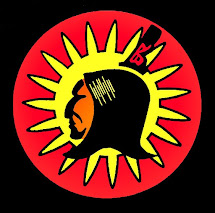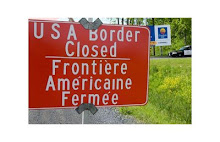This is certainly not a new issue. Beyond several national news stories that have hit the news already this year, my son wore an eagle feather back in 2005 when he graduated from Gowanda. It was no secret and, in fact, when he announced to school officials, at that time, his intentions, there was some question as to whether they would allow him to participate in the Graduation ceremony. He, indeed, did participate, eagle feather and all.
The same superintendent who served in the position in 2005 and 2007 offered the written response to the request. "To the Native American Members of the Class of 2013:... I regret to disappoint you but the Board was not able to reach a majority decision that would have granted permission for students to wear an eagle feather."
Certainly there is not a Native person alive today that is not aware of the ignorance and racism toward them that is harbored by many around our communities. The struggle for some to keep this sentiment neatly below the surface is very difficult and sometimes, impossible. So the failure to grant permission is no surprise and so like every other year when students desired to express pride in who they are, Native students will do so again this year against the backdrop of disapproving eyes from the school board and school officials.
The failure of politicians even at this level to address simple issues is now the rule rather than the exception. However the reasons expressed by Mr. Rinaldi and the Board simply defy the very idea that any of them should be involved in education.
The first reason they listed was whether it was legal for a school district to condone the wearing of a feather, especially considering that the "American eagle is a protected species". What does that say about the intelligence of those involve with the education of children when such a simple and basic question eludes their ability to get an answer? Were they really afraid the "Savages" would go on an eagle killing spree for graduation?
The next question they wrestled with was whether the Seneca Nation would approve or any other "tribal organization" for that matter. There "simply was not enough time to research the questions". Apparently 8 years or even 6 years was not enough time to determine if the Seneca Nation and other organizations that host Pow Wows, parades, festivals and ceremonies with enough eagle feathers worn to make Big Bird jealous could approve of such a thing.
But the third question and the one they always have to get to is: What if? "What would the board do if a different student or students decided to wear symbols representing their personal religious, ethnic or racial group?" "What if someone showed up with a confederate flag, wiccan (witch) symbol or in the extreme, Nazi cross?" Although I am not sure I even need to address the disrespectful and insulting analogy made between a symbol of our identity and the choices Mr. Rinaldi made for comparison, let me say it is amazing how he or anyone on the Board could maintain this level of ignorance about who and what Native people are. Seneca is not a religion. Mohawk is not an ethnicity and Cayuga is not a race. Tuscarora is not a belief and Onondaga is not a lifestyle choice. We are not Native Americans. We are Onkwe Ohnwe, real human beings with a culture, a history, a future and ties to our homeland that Americans can't begin to understand. And these comments make it obvious. An eagle feather is not the symbol of a belief system or a philosophy. It is a symbol of respect and honor and the connection that we have for each other, our past and to nature. It also represents a reminder to stay vigilant and aware of the threats to our people; threats such as those born out of ignorance and racism.
What would happen if someone showed up with an American flag and everyone stood and pledged to it, or if a Christian prayer was said, or if someone wore a cross or a Crucifix? Nothing!













![-[]-[]-/\-[]-[]-](https://blogger.googleusercontent.com/img/b/R29vZ2xl/AVvXsEjLoXmKO8PJVQ5pZ2q7GX7nFKw8H2tb28dxt-o10FUBNtOGszWhWoLB7tgjtMgtISpuSxNW3fcDxfuSS2DqojsdjNJ1lVggyUS374PnzsDbOhk4ukvtTunFQcyfkckZeBzcLbri4LDYN_E/s214/29-03-A-voice-from-the-Akw-.jpg)





1 comment:
It's sad the power that school administrators think they have been given to rule on matters they have no real authority over, but yet how they fail to act in matter in which they are responsible, like bullying by students.
Post a Comment